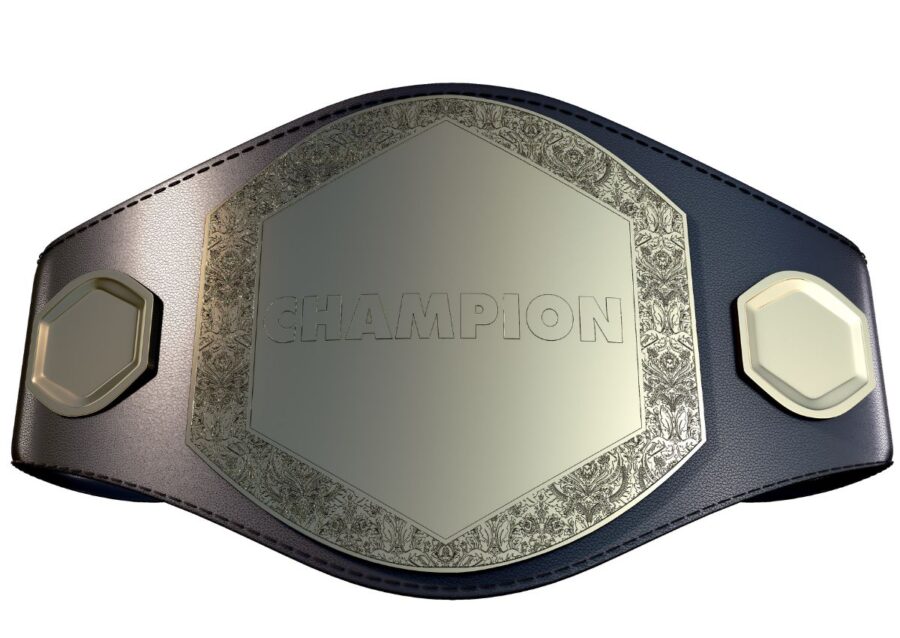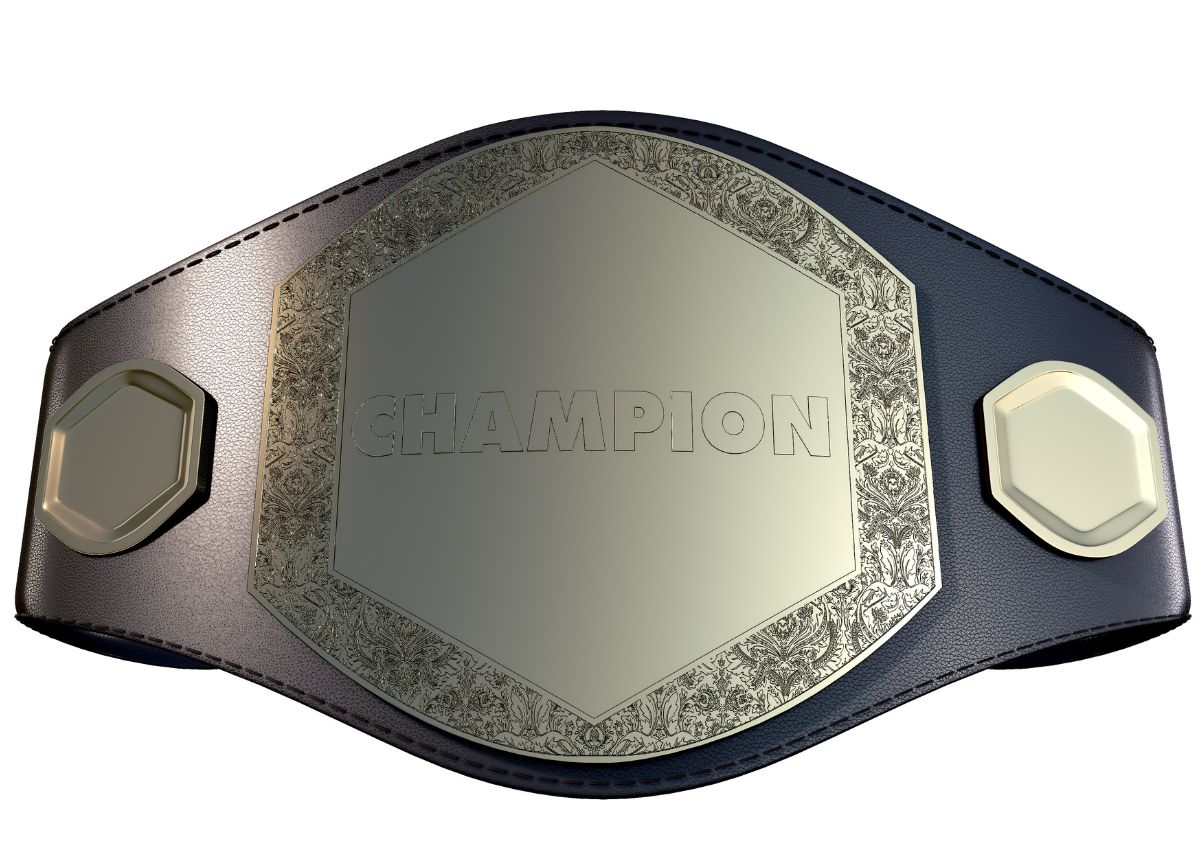
The Path to Victory: Buying your Championship Belt
The journey from brass plates to gold medallions in the world of championship belts mirrors the evolution of professional wrestling itself.

In the world of professional wrestling, the championship belt is an iconic symbol of success and achievement. These belts are more than just trophies; they are the physical manifestation of a wrestler’s hard work and dedication to their craft. Over the years, championship belts have evolved in both design and materials. From humble beginnings with brass plates to the opulence of gold medallions, the story of championship belt materials is a fascinating journey through the history of sports entertainment.
The Early Days: Brass Plates
The origins of the championship belt can be traced back to the late 19th century when professional wrestling began to gain popularity in the United States and Europe. In those early days, the wrestling belts were a relatively simple affair. The belts were made of brass plates attached to a leather strap. The brass plates were often adorned with intricate engravings and designs that represented the sport and the era.
Brass was chosen as the primary material for these belts due to its affordability and durability. Brass could be easily moulded and engraved, making it the perfect choice for the simple, yet symbolic, championship belts of the time. These belts were not excessively ornate, but they carried a sense of prestige that went beyond their modest materials.
As professional wrestling continued to grow in popularity, so did the championship belts. Wrestlers and promoters began to invest more in the design and craftsmanship of these symbols of victory. This evolution led to the use of more luxurious materials.
A Touch of Gold: The Transition to Gold-Plated Belts
By the mid-20th century, professional wrestling had become a global phenomenon, and the championship belts began to undergo a transformation. Brass plates were no longer enough to capture the grandeur and spectacle of the sport. Promoters and wrestling organizations began to employ gold plating to elevate the status of their championship belts.
Gold-plated belts offered a stunning visual appeal. The use of gold added an aura of opulence and prestige that was in line with the larger-than-life personas of professional wrestlers. Gold-plated belts were also heavier and more substantial than their brass counterparts, making them feel even more important to the wrestlers who held them.
The intricacy of the designs on these gold-plated belts increased, with gemstones and precious metals added to enhance their appearance. These belts became true works of art, each one unique and representative of the specific championship they represented.
The transition to gold-plated belts marked a turning point in the history of professional wrestling. The belts became coveted symbols of achievement, and their beauty only added to the excitement and drama of the sport. Wrestlers vied for the opportunity to wear these shimmering, gold-plated masterpieces around their waists.
The Ultimate Luxury: Solid Gold and Gold Medallions
As professional championship belts continued to grow in popularity and profitability, so did the extravagance of the championship belts. The transition from gold-plated belts to solid gold belts became a symbol of the sport’s success and opulence. The most prestigious championships in wrestling began to feature belts that were entirely made of solid gold.
Solid gold belts represented the pinnacle of luxury and accomplishment in the wrestling world. These belts were a testament to the financial success of wrestling promotions and the dedication of the wrestlers who competed for them. The heft of a solid gold belt around a wrestler’s waist signified their status as the absolute best in the business.
While solid gold belts were the ultimate expression of luxury, many championship belts still featured gold medallions. These medallions, often made of solid gold or gold-plated, were prominently displayed on the front of the belt. They were meticulously designed and engraved with the names of past champions, creating a historical lineage that added to the belt’s mystique.
Gold medallions were more than just decorative elements; they were integral to the story of each championship belt. The names etched into the medallions served as a record of the belt’s history, showcasing the lineage of champions who had held it before. Each new champion added their name to this prestigious list, creating a sense of continuity and tradition.
The Modern Era: A Blend of Tradition and Innovation
In the modern era of professional wrestling, championship belts continue to be a central aspect of the sport’s pageantry and drama. The materials and designs have evolved, but the tradition and symbolism remain as strong as ever. Wrestling organizations now use a combination of materials to create championship belts that are not only visually stunning but also resilient and functional.
Most modern championship belts have a core made of metal, often a combination of zinc and brass, which provides the belt with durability and weight. The outer layer is often gold or silver plated, with intricate designs and gemstones that make the belt a true work of art. The use of leather straps, typically made from high-quality materials, ensures the belt is comfortable and secure when worn by the champion.
Despite the advances in technology and materials, the tradition of using gold medallions to showcase past champions is still prevalent. These medallions serve as a bridge between the past and present, reminding fans and wrestlers alike of the rich history of the championship.
Additionally, some championships have incorporated innovative features, such as LED lights, which make the belts even more eye-catching during televised events. This blend of tradition and innovation keeps championship belts relevant and captivating in the modern world of professional wrestling.
The Symbolism of Championship Belts
Championship belts in professional wrestling are not just accessories; they are symbols of hard work, dedication, and success. The evolution of these belts from brass plates to gold medallions reflects the growth and transformation of the sport itself.
Brass plates, though modest in appearance, represented the beginnings of a sport that would captivate audiences worldwide. Gold-plated belts brought prestige and opulence to professional championship belt, elevating it to a new level of entertainment. Solid gold and gold medallions marked the zenith of the sport’s financial success and the dedication of its athletes.
Today, championship belts remain integral to the storytelling and drama of professional wrestling. The materials and designs may change with the times, but the significance of these belts remains constant. They continue to inspire new generations of wrestlers to aspire to greatness, and they serve as a testament to the history and legacy of the sport.
Conclusion
The journey from brass plates to gold medallions in the world of championship belts mirrors the evolution of professional wrestling itself. These belts are more than just pieces of metal and leather; they are the embodiment of the blood, sweat, and tears shed in the ring. They are symbols of excellence and achievement, and they will continue to shine brightly in the spotlight of professional wrestling for years to come.